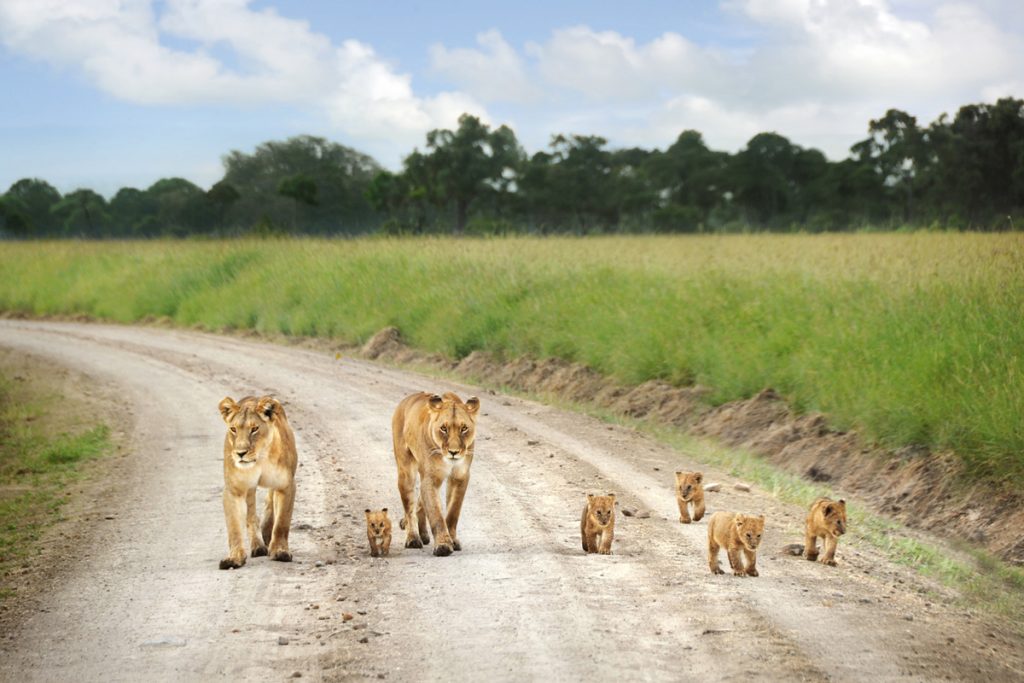Discover Nairobi National Park: A Wildlife Haven in Kenya's Capital
Nairobi National Park stands as a remarkable testament to conservation efforts, offering visitors a unique wildlife experience right on the doorstep of Kenya’s bustling capital city. Spanning over 117 square kilometres, this sanctuary boasts an incredible diversity of flora and fauna against the urban backdrop of Nairobi.





Abundant Wildlife Encounters
Despite its proximity to the city, Nairobi National Park teems with a rich array of wildlife. Embark on a thrilling game drive through the park’s varied landscapes, where encounters with iconic African species like lions, giraffes, zebras, and rhinos are almost guaranteed. The park’s open grasslands, woodlands, and seasonal wetlands provide the perfect habitat for these magnificent creatures.
A Birder's Paradise
Bird enthusiasts are in for a treat at Nairobi National Park, which hosts over 400 bird species. From majestic raptors soaring overhead to colourful songbirds flitting among the trees, the park offers endless opportunities for birdwatching. Keep your binoculars handy to spot ostriches, crowned cranes, secretary birds, and many more avian delights.
Scenic Picnic Sites
Take a break from wildlife viewing and enjoy a leisurely picnic amidst the park’s scenic beauty. Several designated picnic sites offer tranquil settings where visitors can relax and soak in the sights and sounds of nature. Whether you’re enjoying a family outing or a romantic escape, Nairobi National Park provides the perfect backdrop for an al fresco dining & picnic experience. . .
Educational Visitor Centre
Enhance your understanding of Kenya’s natural heritage at the park’s educational visitor centre. Learn about the conservation efforts aimed at protecting Nairobi National Park’s precious ecosystems and the challenges faced by wildlife in an increasingly urbanized landscape. Engaging exhibits and informative displays offer valuable insights into the park’s biodiversity and conservation initiatives.
Accessible Conservation
One of Nairobi National Park’s greatest strengths is its accessibility. Located just a short drive from the city centre, it offers a convenient escape for both locals and tourists alike. Whether you’re a wildlife enthusiast, nature lover, or simply seeking a peaceful retreat, Nairobi National Park invites you to immerse yourself in the beauty of Kenya’s natural wonders, right in the heart of the capital.
Getting to Nairobi National Park
Nairobi National Park, located just 7 kilometers south of Nairobi’s bustling city center, offers multiple entry points such as Maasai Gate, Mbagathi Gate, Banda Gate, Langata Gate, and the Kenya Wildlife Service (KWS) Headquarters. Accessing the park is convenient, with both road and air transport options available.
By Road: The Park is a short distance from the city center, approximately 7 kilometers, and about 10 kilometers from Jomo Kenyatta International Airport. Travelers can easily reach Nairobi National Park by road, enjoying a quick and seamless journey from Nairobi or the airport.
By Air: International visitors arriving at Jomo Kenyatta International Airport can opt for domestic chartered flights to Wilson Airport, followed by a short drive to the park. This option is particularly popular for tourists embarking on combined safaris, providing swift access to Nairobi National Park.
Best Time to Visit Nairobi National Park
For an unforgettable wildlife experience, plan your visit to Nairobi National Park during the dry months, spanning from July to October, as well as January and February. July typically experiences minimal rainfall, making it an ideal time to explore the park’s diverse ecosystems.
The Dry Season, from June to September, offers optimal wildlife viewing opportunities, with animals congregating around water sources for easy observation. While Nairobi National Park welcomes visitors year-round, wildlife sightings may be more challenging during the Long Rains (March to May) and Short Rains (October to November) seasons. During these periods, heavy rainfall may limit game drives, and tall grasses obstruct visibility, requiring extra patience and persistence from wildlife enthusiasts.
